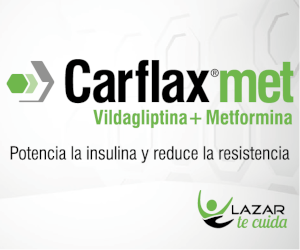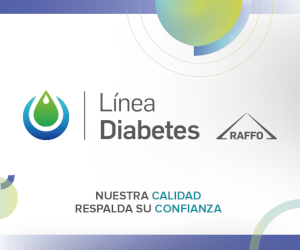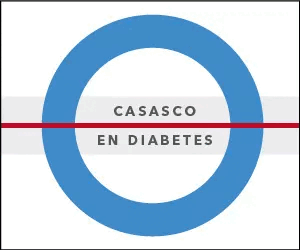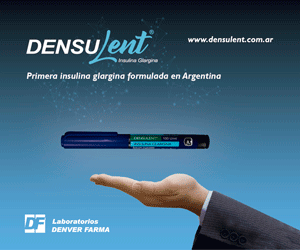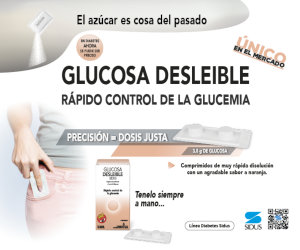Relationship between the Finnish Diabetes Risk Score, fasting blood glucose and glycohemoglobin A1c
DOI:
https://doi.org/10.47196/diab.v57i2.624Keywords:
finnish diabetes risk score, impaired fasting blood glucosa, HbA1c, prediabetes, diabetes mellitusAbstract
Introduction: the Finnish Diabetes Risk Score (FINDRISC) has high sensitivity and specificity for the identification of people at risk of diabetes mellitus (DM) in various populations. Therefore, we aimed to use this index to identify individuals at risk of having alterations in fasting glycemia (FG) and HbA1c. among those who underwent laboratory analysis at ALAC, Argentina.
Objectives: to explore the relationships of the FINDRISC score with the fasting blood glucose (FG) concentration and glycated hemoglobin (HbA1c) level, and to establish appropriate cut-off scores to predict FG ≥100 mg/dL and HbA1c ≥ 5.7% (38.8 mmol/mol) in this population.
Material an methods: we recruited 1,175 individuals from 45 ALAC laboratories for whom FG and HbA1c had been measured. We analyzed the data using the chi square test, odds ratios, ANOVA plus Tukey’s post-hoc test, binomial logistic regression, and receiver operating characteristic (ROC) curves.
Results: total FINDRISC score significantly positively correlated with both FG and HbA1c. Of the constituent variables, age ≥45 years, a large waist circumference, a body mass index ≥25 kg/m2, a close family history of DM, and the use of antihypertensive medication were significantly associated with FG ≥100 mg/dL and/or HbA1c ≥5.7% (38.8 mmol/mol). However, no significant association was found with physical activity or the daily consumption of fruit and vegetables. The mean FG and HbA1c for individuals with total FINDRISC scores ≤11 were 89.9 mg/dL and 5.2% (33.0 mmol/mol), respectively, which increased to 116.1 mg/dL and 6.1% (43.0 mmol/mol) for individuals with scores ≥21, with a dose/response-type relationship. ROC analysis showed that a FINDRISC of 13 was associated with a sensitivity of 81.89%, a specificity of 67.60%, and a correct diagnosis rate of 70.55% for HbA1c ≥5.7% (38.8 mmol/mol); and a sensitivity of 72.50%, a specificity of 70.62%, and a correct diagnosis rate of 71.20% for FG ≥100 mg/dL.
Conclusions: FINDRISC score increases with increasing FG and HbA1c, and is a useful means of identifying people with FG ≥100 mg/dL and HbA1c ≥5.7% (38.8 mmol/mol).
References
I. Sun H, Saeedi P, Karuranga S, Pinkepank M, Ogurtsova K, Duncan BB, Stein C, Basit A, Chan JCN, Mbanya JC, Pavkov ME, Ramachandaran A, Wild SH, James S, Herman WH, Zhang P, Bommer C, Kuo S, Boyko EJ, Magliano DJ. IDF Diabetes Atlas: Global, regional and country-level diabetes prevalence estimates for 2021 and projections for 2045. Diabetes Res Clin Pract. 2022 Jan;183:109119. doi: 10.1016/j.diabres.2021.109119.
II. American Diabetes Association. 10. Cardiovascular Disease and Risk Management: Standards of Medical Care in Diabetes-2021. Diabetes Care 2021 Jan;44(Suppl 1):S125-S150. doi: 10.2337/dc21-S010. Erratum in: Diabetes Care 2021 Sep;44(9):2183-2185.
III. Lindström J, Tuomilehto J. The diabetes risk score: a practical tool to predict type 2 diabetes risk. Diabetes Care 2003 Mar;26(3):725-31. doi: 10.2337/diacare.26.3.725.
IV. Moore JX, Chaudhary N, Akinyemiju T. Metabolic syndrome prevalence by race/ethnicity and sex in the United States, National Health and Nutrition Examination Survey, 1988-2012. Prev Chronic Dis 2017 Mar 16;14:E24. doi: 10.5888/pcd14.160287.
V. Tuomilehto J, Lindström J, Hellmich M, Lehmacher W, Westermeier T, Evers T, Brückner A, Peltonen M, Qiao Q, Chiasson JL. Development and validation of a risk-score model for subjects with impaired glucose tolerance for the assessment of the risk of type 2 diabetes mellitus. The STOP-NIDDM risk-score. Diabetes Res Clin Pract 2010 Feb;87(2):267-74. doi: 10.1016/j.diabres.2009.11.011.
VI. Schwarz PE, Li J, Lindstrom J, Tuomilehto J. Tools for predicting the risk of type 2 diabetes in daily practice. Horm Metab Res 2009 Feb;41(2):86-97. doi: 10.1055/s-0028-1087203.
VII. American Diabetes Association. 2. Classification and Diagnosis of Diabetes: Standards of Medical Care in Diabetes-2021. Diabetes Care 2021 Jan;44(Suppl 1):S15-S33. doi: 10.2337/dc21-S002. Erratum in: Diabetes Care 2021 Sep;44(9):2182.
VIII. Pesaro AE, Bittencourt MS, Franken M, Carvalho JAM, Bernardes D, Tuomilehto J, Santos RD. The Finnish Diabetes Risk Score (FINDRISC), incident diabetes and low-grade inflammation. Diabetes Res Clin Pract 2021 Jan;171:108558. doi: 10.1016/j.diabres.2020.108558.
IX. Bernabe-Ortiz A, Perel P, Miranda JJ, Smeeth L. Diagnostic accuracy of the Finnish Diabetes Risk Score (FINDRISC) for undiagnosed T2DM in Peruvian population. Prim Care Diabetes 2018 Dec;12(6):517-525. doi: 10.1016/j.pcd.2018.07.015.
X. Rodríguez MG, Saldaña MR, Leyva JMA, Rojas RM, Molina-Recio G. The FINDRISC questionnaire capacity to predict diabetes mellitus II, arterial hypertension and comorbidity in women from low-and-middle-income countries. Health Care Women Int 2020 Feb;41(2):205-226. doi: 10.1080/07399332.2019.1680678.
XI. López-González AA, García-Agudo S, Tomás-Salvá M, Vicente-Herrero MT, Queimadelos-Carmona M, Campos-González I. Test FINDRISC: relación con parámetros y escalas de riesgo cardiovascular en población mediterránea española. Rev Med Inst Mex Seguro Soc 2017 May-Jun;55(3):309-316.
XII. Lima-Martínez MM, Colmenares L, Campanelli Y, Paoli M, Rodney M, Santos RD, Iacobellis G. Epicardial adipose tissue thickness and type 2 diabetes risk according to the FINDRISC modified for Latin America. Clin Investig Arterioscler 2019 Jan-Feb;31(1):15-22. English, Spanish. doi: 10.1016/j.arteri.2018.06.002.
XIII. Carvalho JA, Barengo NC, Tuomilehto J, Conceição RD, Santos RD. The Finnish Diabetes Risk Score (FINDRISC) as a screening tool for hepatic steatosis. Ann Med 2011;43(6):487-94. doi: 10.3109/07853890.2011.554428. Epub 2011 May 23.
XIV. Hellgren MI, Petzold M, Björkelund C, Wedel H, Jansson PA, Lindblad U. Feasibility of the FINDRISC questionnaire to identify individuals with impaired glucose tolerance in Swedish primary care. A cross-sectional population-based study. Diabet Med 2012 Dec;29(12):1501-5. doi: 10.1111/j.1464-5491.2012.03664.x..
XV. Gagliardino J, et al. Prevención primaria de diabetes tipo 2 en Argentina: estudio piloto en la provincia de Buenos Aires. Rev Arg Endocr MEtab 2016;53(4):135-141.
XVI. Guzmán-Rodríguez S, et al. Estudio de detección de riesgo de DM en atención primaria según cuestionario FINDRISC en el municipio de General Pueyrredón. Rev Soc Arg Diab 2016;50(3):96-107.
Downloads
Published
How to Cite
Issue
Section
License
Copyright (c) 2023 on behalf of the authors. Reproduction rights: Argentine Diabetes Society

This work is licensed under a Creative Commons Attribution-NonCommercial-NoDerivatives 4.0 International License.
Dirección Nacional de Derecho de Autor, Exp. N° 5.333.129. Instituto Nacional de la Propiedad Industrial, Marca «Revista de la Sociedad Argentina de Diabetes - Asociación Civil» N° de concesión 2.605.405 y N° de disposición 1.404/13.
La Revista de la SAD está licenciada bajo Licencia Creative Commons Atribución – No Comercial – Sin Obra Derivada 4.0 Internacional.
Por otra parte, la Revista SAD permite que los autores mantengan los derechos de autor sin restricciones.













